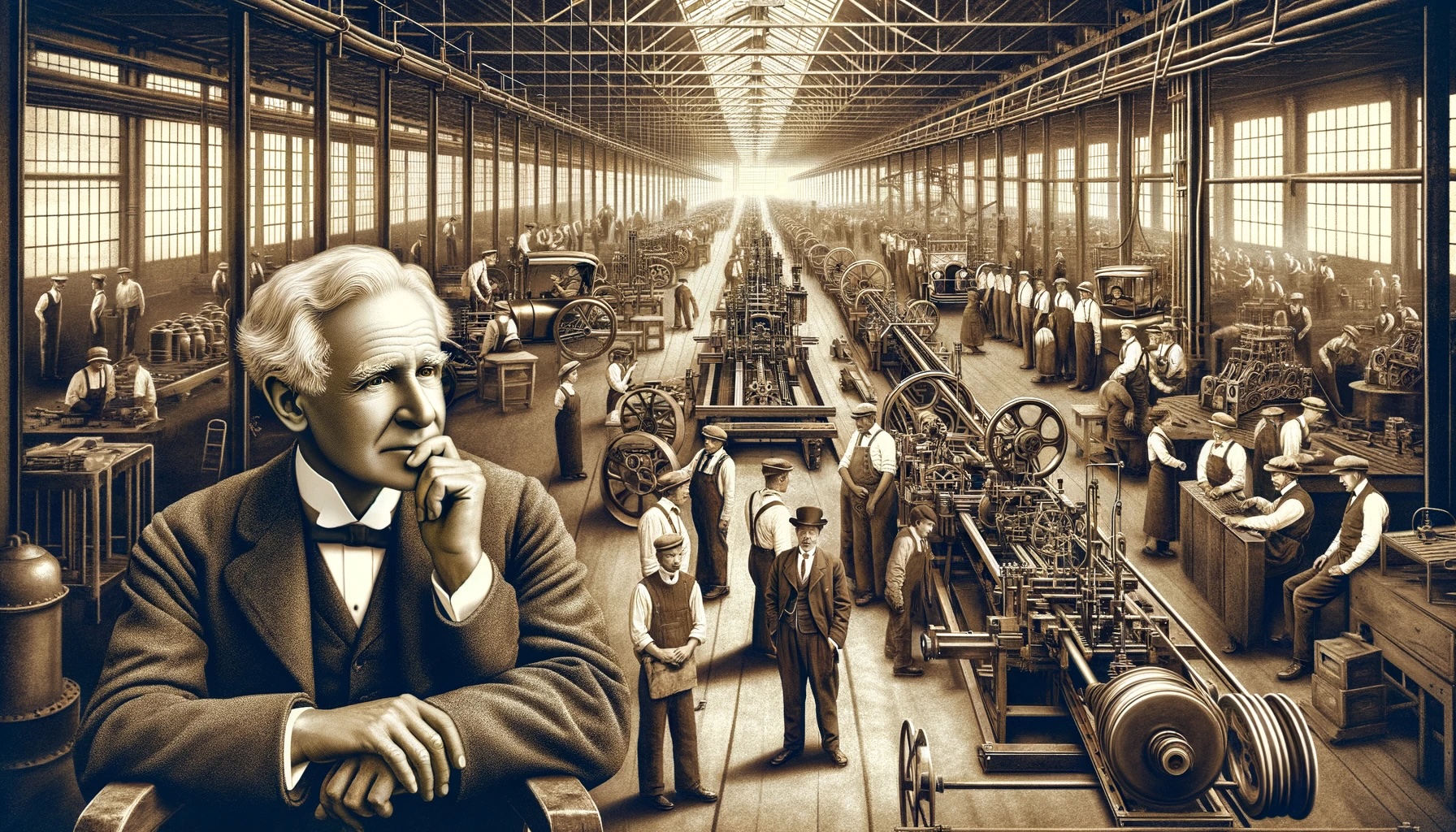Knowledge Work's Disruption and the Future of Product Development

Earning my living as a CTO or CTPO, I recently launched a new Software Tool in a crowded market: a tool to help teams build software. Entering an established market with a different approach needs a sound foundation for why the new solution is contrarian to what others are already doing while also still providing value. Today I want to share the core principles and the thought leaders that inspired me here.
Cal Newport and the End of the Hyperactive Hive Mind ¶
In his groundbreaking book, A World Without Email , Cal Newport argues that most companies today operate in a hyperactive hive mind mode: a workflow based on continuous, unplanned, and unstructured digital communication. Simple tasks often require consulting someone on Slack or via email.
Newport predicts a fundamental disruption in knowledge work, comparable to Henry Ford’s introduction of the conveyor belt, but in a completely different direction.
On an organizational level, this means that knowledge work cannot be organized for others. It must be organized by those who are actually doing the work. Organizations can only create the space for these individuals to self-organize.
He also introduces the principle of Slow Productivity: focus on one task at a time, work at a natural pace, and prioritize quality, as elaborated in his upcoming book .
Shape Up and Variable Scope ¶
Ryan Singer authored a book about Basecamp’s product process , which I implemented in my last team. This approach resolved longstanding issues in designer-developer collaboration: It’s not about tooling or process optimization; it’s about breaking down work so small, autonomous, cross-functional teams can tackle it effectively, one of the core principle of Shape Up .
Another key principle is “appetite” (how much time we’re willing to spend) versus “estimates” (how long we think it will take). Shape Up champions projects with fixed time and variable scope. This not only helps with strategic resource allocation, but when the scope is flexible, timing, costs, and above all, quality can be guaranteed.
This method aligns perfectly with Slow Productivity. It’s a natural development approach, akin to a startup environment, but scalable. The world’s top tech corporations came naturally roughly the same set of principles. .
Incidentally, Basecamp also developed Ruby on Rails , popularizing MVC principles years ahead of other frameworks.
AI and the Rise of the Solo Developer / Small Teams ¶
In Chess, neither pure human players nor pure AI dominates; instead, “centaurs” – human players augmented with AI – are the most effective. This synergy of AI and human intuition leads to superior outcomes. We are currently witnessing a similar evolution in software development, the centaur programmer .
Additionally, with ChatGPT, designers are now more capable than ever of coding, and developers can draw a UI and make it real - so the lines between them begin to blur .
I built the first version of dumplink single-handedly in weeks, incorporating robust web socket functionality for collaborative updates I never did before full-stack completely on my own, facilitated by ChatGPT and GitHub Copilot.
According to Brooks Law , smaller teams have less communication overhead, so if you divide, it makes them exponentially more productive than just augmenting an existing team of the same size.
Asynchronous Work and Remote ¶
Despite some pushback on remote work, with companies reverting to office-based setups , I do not know of a single startup founded today that is not starting remotely.
These companies either naturally adopt an asynchronous work style or adapt to it. Asynchronous means not requiring all participants to take part in something simultaneously, reserving synchronous meetings for special cases requiring high-bandwidth communication (James Stanier, Effective Remote Work ).
So - this closes all my open loops: Async work avoids the hyperactive hive mind trap. While Shape Up, originating from a remote company, is ideally suited for asynchronous work, allowing for deliberate synchronous collaboration when necessary.
Conclusion ¶
Back to where we started, with Cal Newport’s insights. He’s hitting the nail on the head with the Attention Capital Principle: Think of the brain as your prime asset. It’s all about how you deploy this capital. Remember Ford? He didn’t have more resources; he just used what he had differently, kickstarting an industrial revolution. We’re on the brink of a similar upheaval in knowledge work.
But here’s the kicker: this time, it’s about something other than optimizing standardized processes. It is just about knowledge workers being able to finish what they started while working at a natural pace and keeping their sanity intact.
Optimize the environment, not the people!